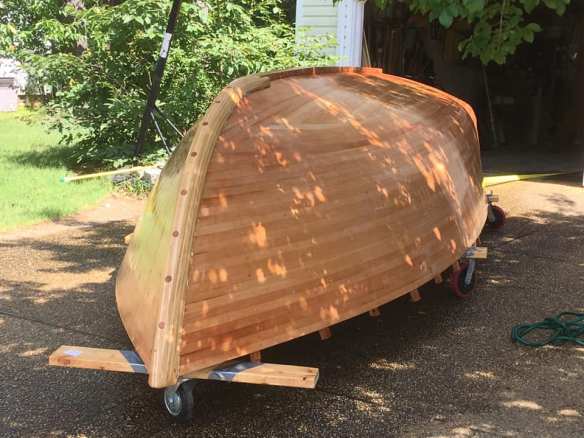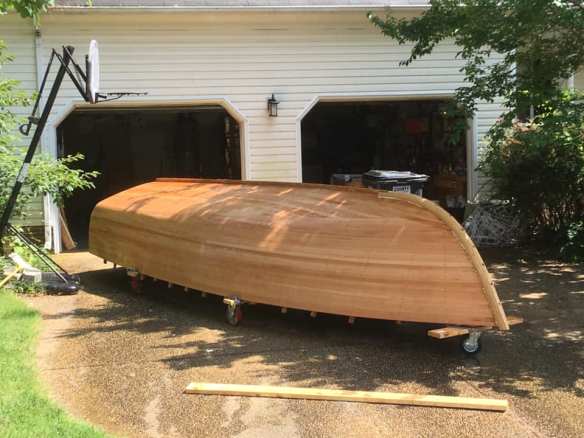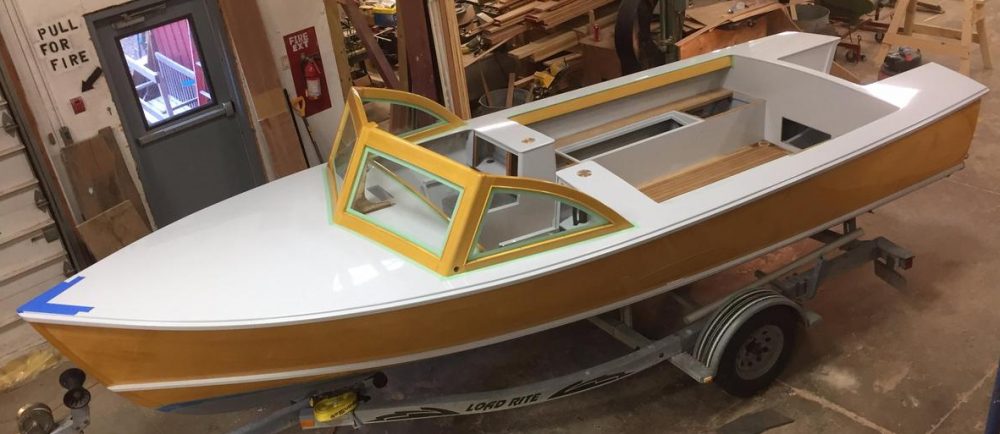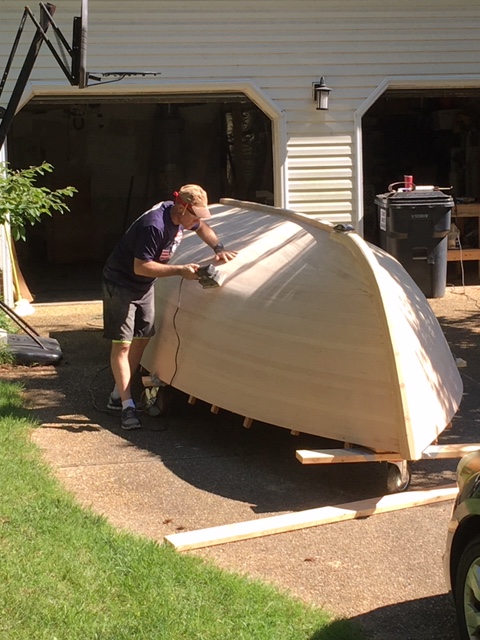I washed down the boat to see any color imperfections and hard lines that I wasn’t seeing before. Things like wood filler, grain tear out, bumps, knuckles, etc. There were a few spots that I picked out but overall I was pretty happy with the look. This is about what she’d look like with no stain. I haven’t been this excited since I put up the moulds – she looks like a real boat.

Freshwater washdown, still wet. I like how the cherry plugs pop in the ash stem.

Freshwater washdown. Identifying any major discolorations (wood filler, etc) and distinct lines that need to be faired out.
I especially liked how the cherry plugs in the stem pop. That’s a nice color difference – will probably incorporate cherry in the guard and spray rails, both are ash.
Life sure has been good to me…building this boat after all those years of thinking about it has been a revelation. It’s a lot of fun! I’m happy to have been able to include family and friends, and to use my Grandfathers tools and my Dad’s advice along the way. You can’t buy stuff like that.
Forward Progress!

